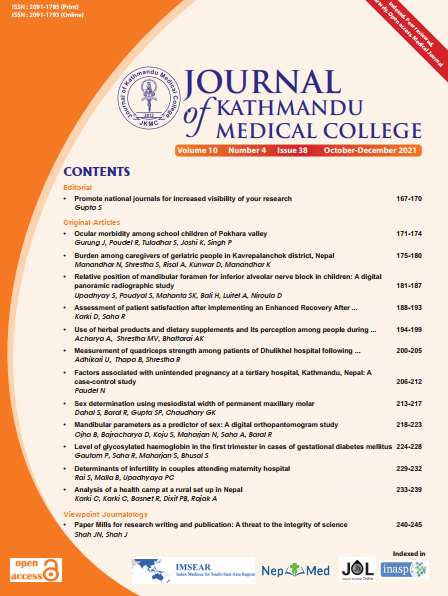Abstract
Background: Despite the widely available family planning efforts to reduce the proportion of unwanted pregnancies, the rate of unintended pregnancies is still significantly large in Nepal.
Objectives: To find out the factors associated with unintended pregnancy.
Methods: A case-control study was conducted in Kathmandu Medical College Teaching Hospital. Cases were the women seeking safe abortion services for unintended pregnancy and women with intended pregnancy were controls. Eightyone cases and eighty-one controls (total 162 women) were included in the study purposively. Face-to-face interview was done to collect data using structured questionnaire. Data were collected from 15th January 2019 to 30th August 2019. Ethical clearance was obtained from institutional review committee of Kathmandu Medical College. Permission for data collection was obtained from the head of the department of Obstetrics and Gynaecology and written informed consent was taken from each respondent. Data were analysed using statistical package for social sciences 20.0 version.
Results: Age below 20 years (AOR: 5.14; 95% CI: 1.14, 23.06) and above 30 years (AOR: 2.59; 95% CI: 1.10, 6.08); primary level education (AOR: 4.46; 95% CI: 1.27, 15.62); and secondary level education (AOR: 2.97; CI: 1.39, 6.34), student by occupation (AOR: 11.40; 95% CI: 3.07, 42.25), three and more gravidity (AOR: 13.82; 95% CI: 4.56, 41.87)) and perceived ideal number of child one (AOR: 4.63; 95% CI: 1.18, 18.10) were associated with increased risk of unintended pregnancy.
Conclusion: Age, education, occupation, gravidity, and perceived ideal number of children were the factors significantly associated with unintended pregnancy.

